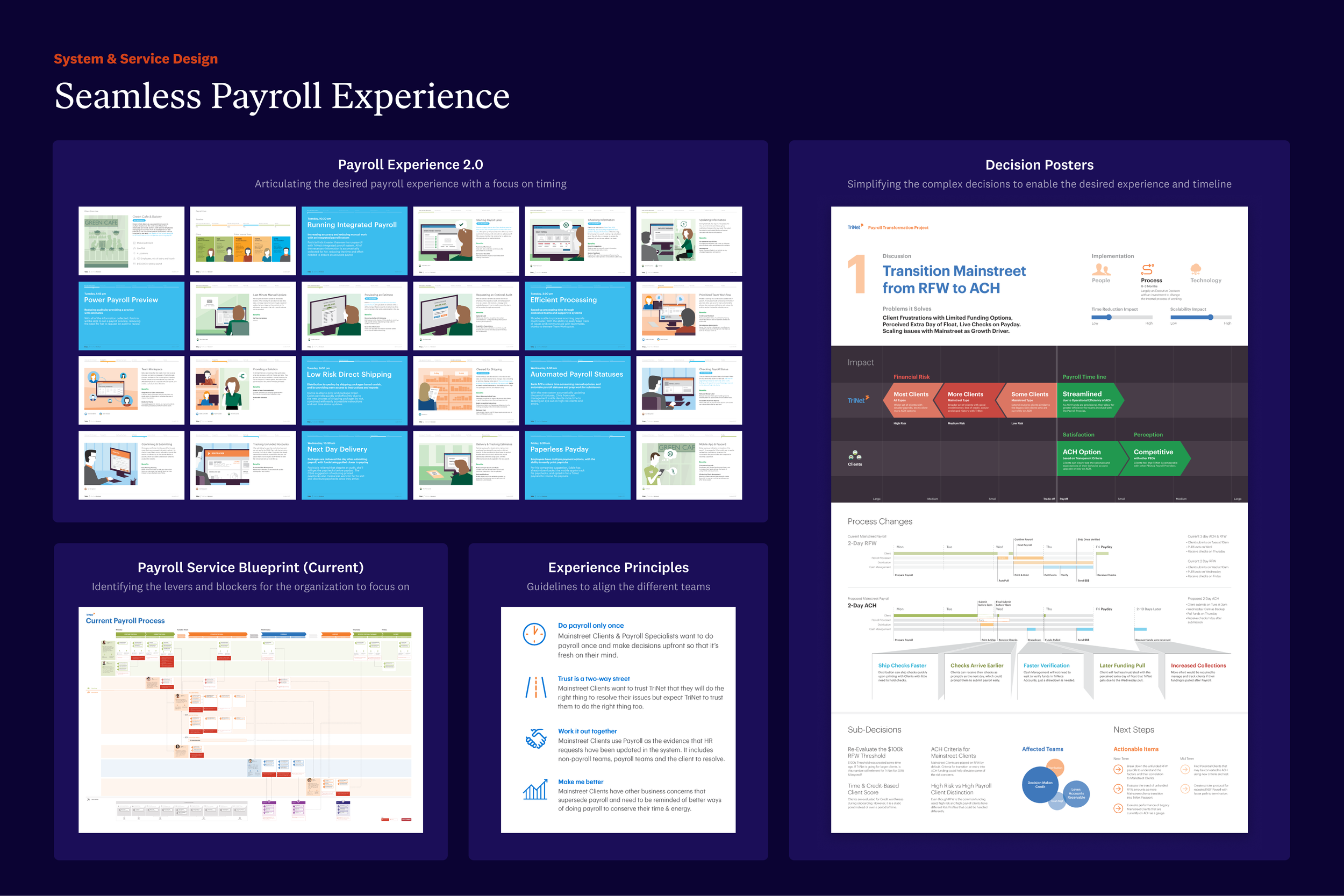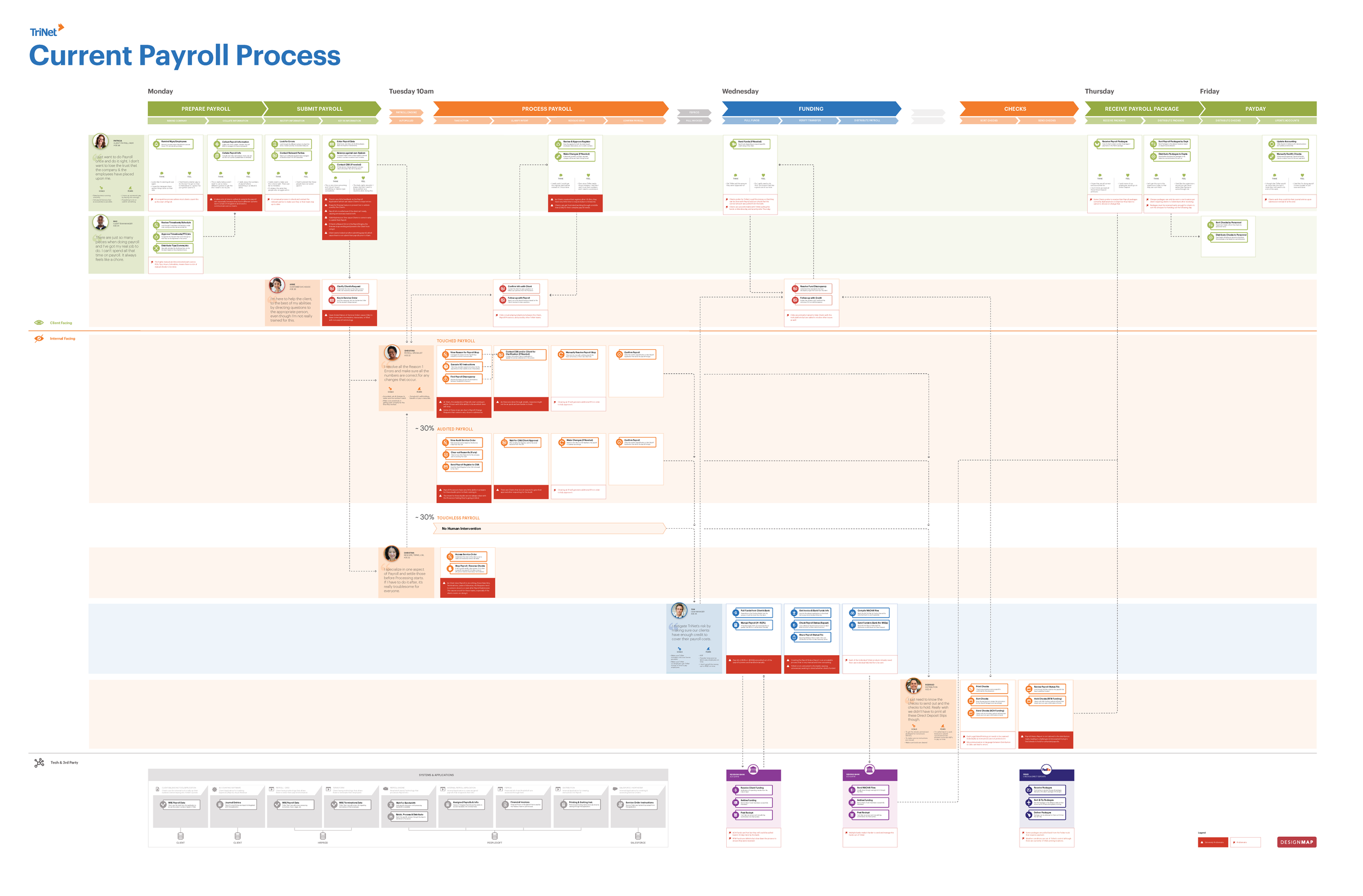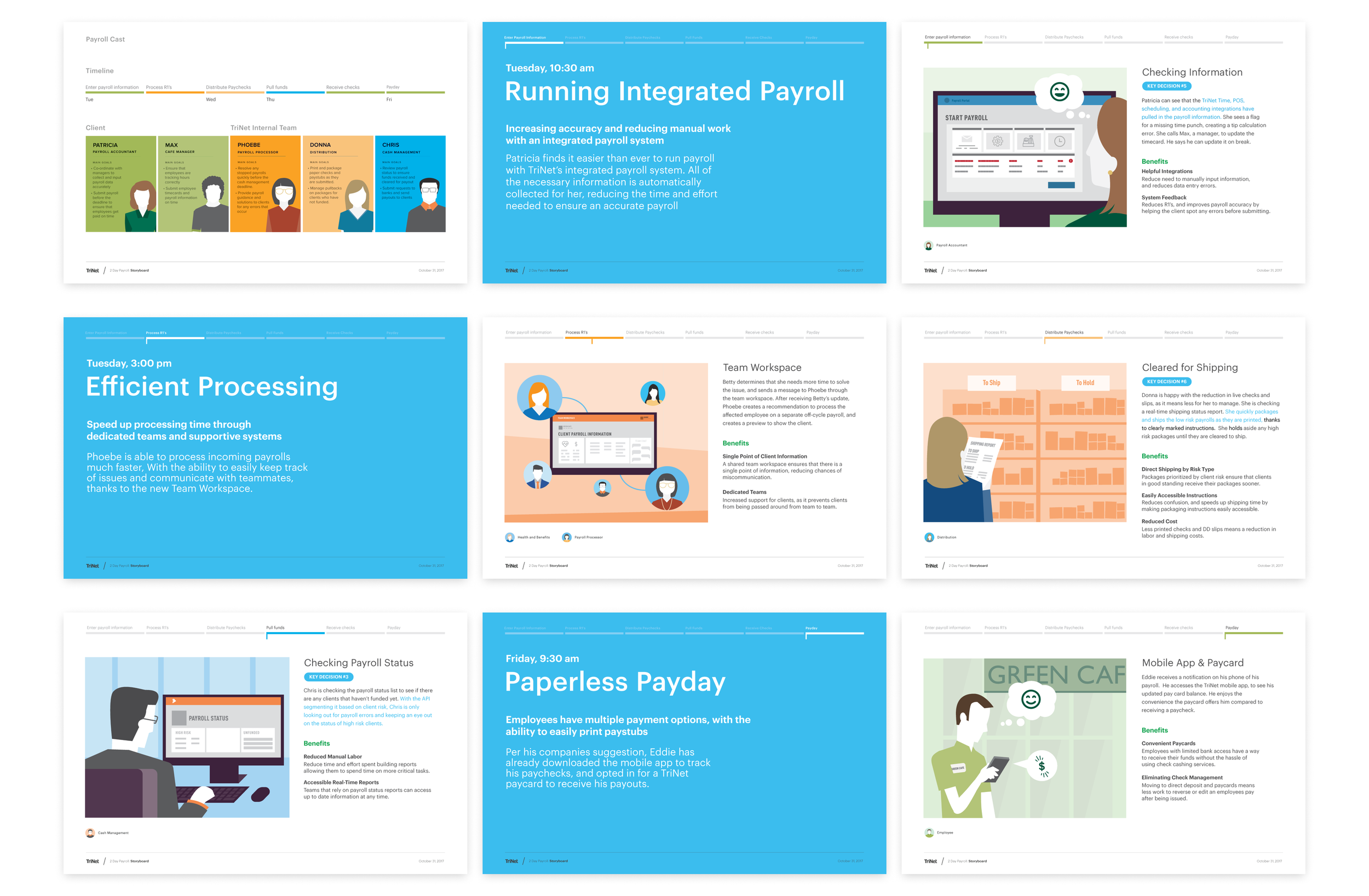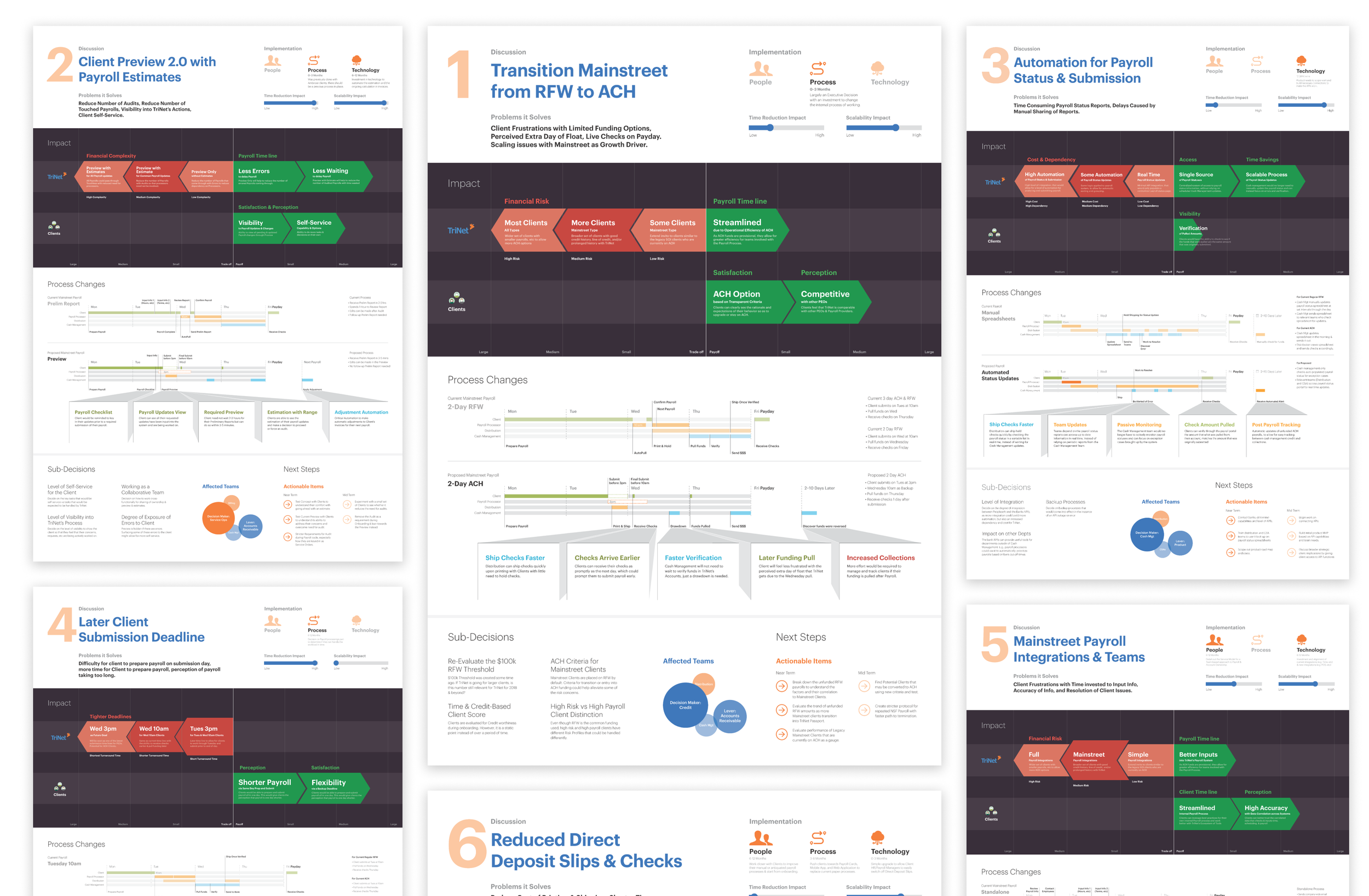TriNet HR
Re-imagining the End-to-End Payroll Experience
Type: Vision | Role: Lead Designer | Design: Service | Duration: 3 Months
To comply with the non-disclosure agreement, I have omitted and obfuscated confidential information. All info in this case study is my own and does not necessarily reflect the views of TriNet.

THE ASK
‘Buy’ Time by Streamlining the Payroll Process
TriNet is a $7 billion Professional Employment Organization (PEO) that allows businesses to outsource their human resources via co-employment.
It was taking 1 day longer than its competitors to process payroll as it was more conservative in its approach to financial risk. The issue was becoming problematic as it was being brought up by current customers and by prospects in sales calls.
The CFO asked for assistance to
study the implications of taking on more risk
identify areas (across departments) where we could ‘buy’ time
envision TriNet’s future payroll experience.
MY ROLE
Service designer who collaborated with multiple payroll teams to align on ways to streamline the process
Design Lead
Baselined many major product decisions with the SVP & VPs
Provided leadership to a senior designer & visual designer
UX Researcher
Planned & conducted interviews across the payroll process
Synthesized insights to drive experience decisions
Service Designer
Workshop and document the service blueprint across the payroll process
Facilitate and align the payroll team on the experience principles.
Employee Perspective
We honed in on interviewing employees, documenting and visualizing the current payroll process through a service blueprint from an employee perspective so as to
Understand the role & activities of the different TriNet departments
Identify the challenges that were causing delays and poor experiences for customers & employees
Find opportunities to increase risk for reduction in time
Customer Perspective
We honed in on documenting and visualizing the current payroll process through a service blueprint from a customer perspective so as to
Understand the underlying emotional goals of payroll, not just the functional
Interconnect the impact of internal activities on the customer’s payroll experience
Identify areas of friction and frustration from customers

Payroll Experience 2.0
We translated the insights and learnings from customer and employee interviews into broader explorations of a world-class payroll experience with moments that matter and its implication on process and timelines.
Experience Principles
Customers prefer to do payroll all in one sitting, when payroll needs to be submitted. The current payroll system cannot handle these simultaneous requests which forces customers to do it many times.
Customers put in their payroll info such as promotions, terminations, etc during payroll time. Internal teams work on these items in siloed ways, forcing the customer to manage departments individually.
Due to TriNet’s low risk tolerance, it makes clients perceive that TriNet does not trust them. TriNet needs a better way to know which clients are low-risk and which ones are more risky.
While payroll is something that you don’t want to get wrong, it’s not a task that drives the business. Customers are eager to improve and speed up their workflow through their payroll provider.
Articulating the Payroll 2.0 Experience
Snippet of the payroll experience that details out activities, timing, and benefits based on the principles shown above. Storyboards were done in collaboration with the Visual Designer.

Key Decisions for the CFO
For the CFO review, we decided to zoom out and condense these problems and solutions into 6 life-sized Decision Posters that showcased Tradeoffs & Payoffs, Effect on Timeline, and Sub-decisions to enable streamlined decision-making that highlighted risk and process implications for TriNet.
Tradeoffs and Payoffs
We simplified complex and interconnected problems into top-level decisions with the left side for risk (tradeoff for red) for the company & customers, and the right side for reward (payoff for green) to enable CFO-level discussions.
Effect on the Timeline & Process
We highlighted easy comparisons between the current process and how each decision would impact the timeline, steps, improvements, and associated risks to clarify the impact on the process.
Sub-decisions & Next Steps
While we summarized the problems and solutions into top-level decisions, we included sub-decisions and next steps that the team could work on to start to move things forward.
Culminating in 6 Decisions for the CFO
We printed these 6 decision posters and placed them on boards where I walked through and discussed these top 6 decisions with the CFO & SVPs and the desired payroll experience with the storyboards.
These posters helped in keeping conversations at the right level of altitude with the appropriate next level of detail and action.

Outcomes & Reflections
The CFO approved most of our recommendations and the relevant funding to get them done. A committee was set up with these different departments we spoke with, who used our deliverables to accelerate their work.
It was a great learning opportunity to work strategically at the C-suite level and to focus on the decisions and repercussions of those decisions when presenting to these executives.

















